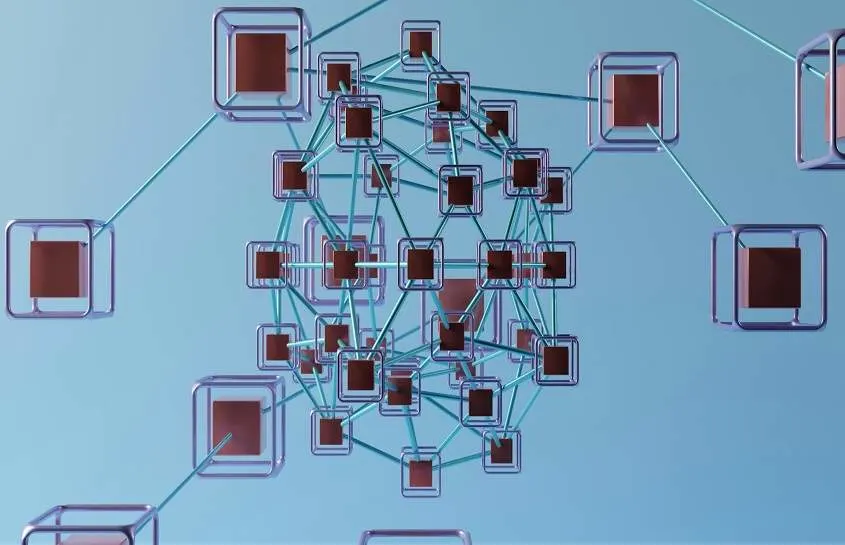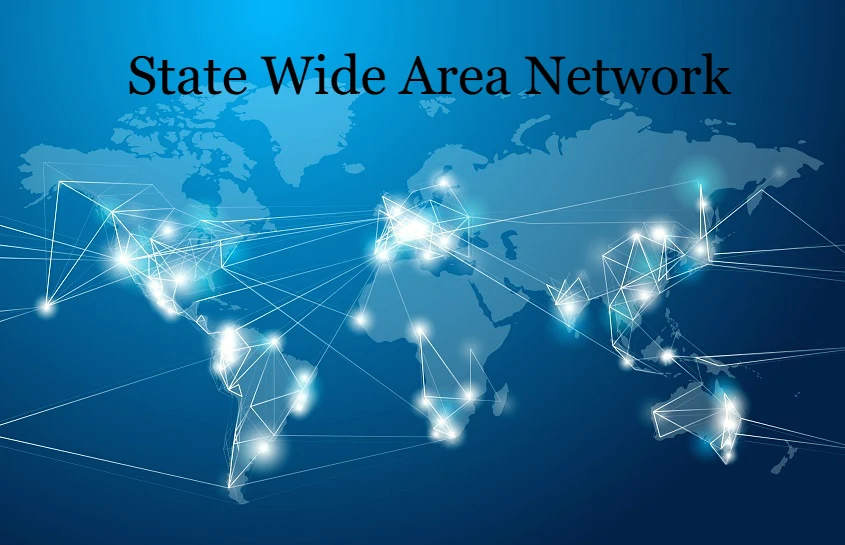Imagine every district office, village council, hospital, and school in an entire state sharing information as easily as folders on the same computer. That vision springs to life when a State Wide Area Network (SWAN) links them all. Whether you are a student, an IT professional, or simply curious about e-governance, this guide breaks down the idea from the ground up—without jargon overload and with plenty of real-world context.
What is a wide area network?
A wide area network (WAN) is a communication system that connects devices spread over large geographic regions—often countries or continents—through public or leased telecommunication lines. Unlike a home Wi‑Fi router or a company’s single‑building switch, a WAN stitches together multiple local networks so data can travel long distances swiftly and securely. Think of it as the interstate highway of digital information, carrying packets instead of cars.
Which is the first wide area network?
Long before fiber cables looped the globe, the 1960s ARPANET project—funded by the U.S. Defence Advanced Research Projects Agency—pioneered a WAN that let researchers share computer resources across several universities. ARPANET sent its first packet on October 29, 1969, making it the first wide area network and the great‑grandparent of today’s internet. Its success proved that distant computers could talk, sparking a networking revolution that eventually gave birth to SWANs in the public sector domain.
Defining a SWAN: The Big Picture
A State Wide Area Network is a special type of WAN built exclusively to serve every government office within a single state or province. Rather than relying on the open internet, a SWAN creates a dedicated, often encrypted backbone connecting thousands of public offices, databases, and service portals. This backbone usually has three layers:
- Core Layer (Tier‑I) – State‑level data center and network operations hub.
- Distribution Layer (Tier‑II) – District and divisional nodes that relay traffic locally.
- Access Layer (Tier‑III) – Block, taluka, or village offices that finally deliver online services to citizens.
Because the network is engineered, owned, and managed by the state, it can be tuned for critical workloads—land‑record lookups, tele‑medicine video calls, GST filings—without competing with YouTube or Netflix traffic.
State Wide Area Network Established – Milestones and Challenges

The phrase “State Wide Area Network established” pops up in many tender documents once the core and distribution layers go live. Setting up those layers is anything but trivial:
- Geographic audits map where fiber versus wireless links make sense—mountainous terrain often needs high‑bandwidth microwave or radio.
- Redundancy plans ensure no single cut fiber or failed router can paralyze the service.
- Service‑level agreements (SLAs) lock vendors into uptime benchmarks—typically 99.5 % or higher.
- Capacity forecasting models citizen demand three, five, or even ten years out, so upgrades don’t lag behind usage spikes.
Grants from central governments or multilateral agencies often fund the first rollout, but operating costs shift slowly to state budgets. That transition can be political—why pay for redundant links a remote office “never” uses? The answer becomes clear the first time a disaster demands instant data sharing across every district.
Inside the SWAN Toolbox
1. Transmission Media
- Optical fiber for high‑speed, low‑latency backbone links.
- Ethernet over copper in legacy buildings awaiting fiber upgrades.
- Microwave radios to bridge rivers, forests, or deserts where trenching fiber is costly.
2. Network Hardware
- MPLS edge routers for traffic segmentation.
- L3 switches at district points of presence (PoPs).
- Unified threat‑management firewalls to inspect every packet.
3. Software & Services
- Bandwidth management ensures video hearings don’t throttle revenue‑office uploads.
- Directory services centralize user authentication statewide.
- Managed VoIP replaces pricey legacy telephone circuits.
4. Governance Layer
- A state CIO or e‑governance agency typically owns policy, budget, and vendor contracts.
- Independent third‑party audits check security compliance.
With these elements in place, the phrase “State Wide Area Network” becomes more than buzzwords; it evolves into a service fabric enabling real‑time governance.
State the difference between local area network and wide area network
| Attribute | Local Area Network (LAN) | Wide Area Network (WAN) |
| Scope | One building or campus | City, state, or globe |
| Ownership | Private (single organization) | Multiple entities or carriers |
| Speed | Very high (≤ 10 Gbps) | High but variable (1 Mbps–100 Gbps) |
| Latency | Low (sub-millisecond) | Higher (tens of ms) |
| Typical Cost Model | One-time hardware + maintenance | Ongoing lease for links & hardware |
| Example | Office switch + Wi‑Fi | SWAN backbone or global VPN |
A SWAN falls into the WAN column, but its exclusive focus on one state’s public infrastructure sets it apart from corporate or global WANs.
What is SWAN in computer?

When someone asks “What is swan in computer?” they usually want a concise definition: it is a state-run, multi-tier data network that links government offices via dedicated bandwidth, often using multi-protocol label switching (MPLS) to guarantee Quality of Service. From a computer‑science angle, a SWAN embodies:
- Logical segmentation into secure virtual networks for departments like finance or police.
- Scalable addressing with IPv6 to accommodate millions of devices—CCTVs, IoT water meters, or biometric readers.
- Centralized security policies so patch management, intrusion detection, and backup routines stay uniform across hundreds of subnets.
In simpler words, SWAN turns scattered government PCs into one giant virtual office.
Everyday Services Riding on SWAN
- Digital Certificates & Aadhaar Verification – Rapid ID checks at welfare counters.
- Tele‑education – Broadcasting interactive lessons to rural classrooms.
- Health‑care telemetry – ICU dashboards in district hospitals feeding into a state command center.
- e‑Courts – Judges join remote hearings without physical file transfers.
- GIS & Disaster Management – Live maps track flood levels, crop damage, or evacuation routes.
Each use case raises the importance of network uptime—hence the obsession with redundancy and 24×7 network‑operations centers.
Network Security—Because Public Data Is Gold
Government databases host everything from land deeds to police records. A breach could cripple services or expose sensitive data. SWAN deployments, therefore, bundle:
- End‑to‑end IPsec tunnels for encryption.
- Role‑based access control so a tax clerk can’t open crime dossiers.
- Central logging & SIEM that flag anomalies—say, huge file transfers at 2 a.m.
Regular penetration tests keep complacency at bay, and cybersecurity drills train staff to avoid phishing traps.
Funding & Sustainability
While grants ignite Phase ‑1 rollouts, long‑term viability demands:
- Usage‑based chargeback where departments pay per Mbps.
- Public‑private partnerships that lease spare capacity to banks or universities.
- Capex‑to‑Opex conversion via network‑as‑a‑service contracts, shifting upgrades onto vendors.
Such financial engineering ensures that a State Wide Area Network doesn’t turn into abandoned ducting once the first budget cycle ends.
Future Trends
- Edge Computing – Hosting micro‑data centers at district PoPs to slash latency for AI‑driven CCTV analytics.
- 5G & Satellite Backhaul – Replacing slow radio links in remote forests or islands.
- Zero‑Trust Architecture – Verifying every packet, device, and user continuously rather than once at login.
- Green Networking – Solar‑powered PoPs and smart cooling to trim carbon footprints.
With such upgrades, the State Wide Area Network will remain the digital nervous system of governance, powering everything from smart‑meter billing to blockchain land ledgers.
Closing Thoughts
A State Wide Area Network sounds like a mere technical upgrade, but its social impact is profound: shorter queues, transparent records, faster disaster response, and unified policy execution. Whether you came searching for “What is swan in computer?” or wanted to state the difference between local area network and wide area network, the takeaway is clear: when a State Wide Area Network is properly planned, funded, and secured, it becomes the silent powerhouse behind modern governance.
From ARPANET’s first packet to gSWAN’s 4,000‑node grid, we’ve learned that distance is no longer an obstacle—it’s just another parameter to optimize. And that means the next birth certificate you download or the next online court hearing you attend might quietly depend on a SWAN humming in the background, weaving every corner of your state into a single digital fabric.
Frequently Asked Questions
A: Not yet. India popularized the model, but similar networks exist in Malaysia (MAMPu), Kenya (National Optical Fibre Backbone), and parts of Europe under different names.
A: Core rings range from 1 Gbps in smaller states to 10 Gbps or more in tech hubs. Access points may run at 100 Mbps and upgrade as demand grows.
A: Usually no. A SWAN is for inter‑departmental traffic. Citizen services ride on top through web portals that expose limited APIs or VPN gateways for kiosk operators.
A: Automatic failover reroutes traffic via redundant paths. Mission-critical sites also carry backup radio or satellite links.
A: Often, they retrofit old leased‑line networks, reusing ducts, shelters, and even microwave towers to cut costs.
